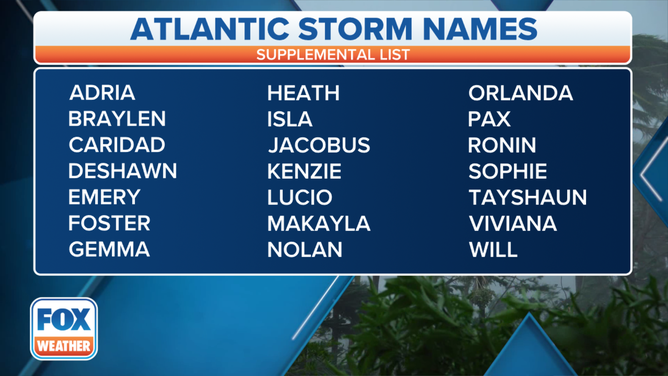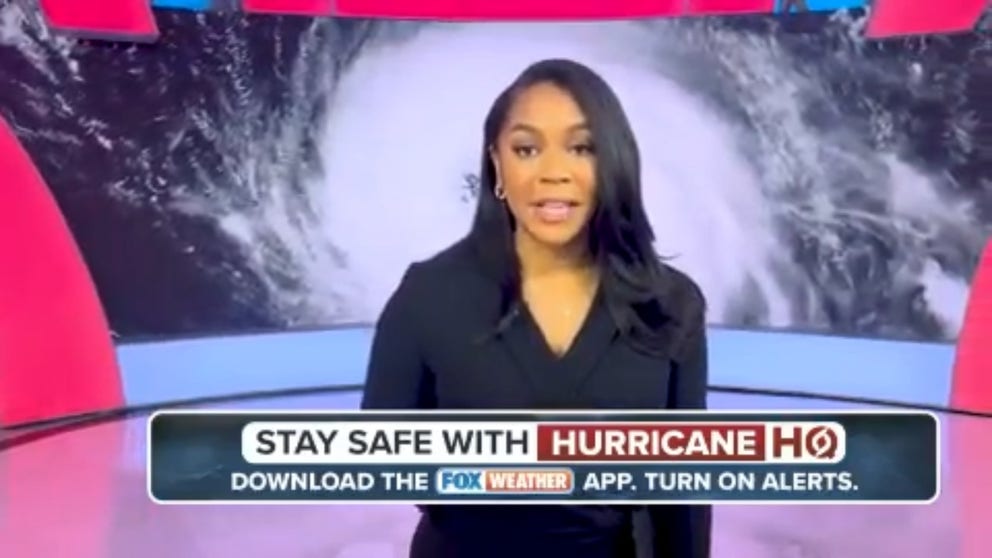How do hurricanes and tropical storms get their names?
Historical records show hurricanes were named in the Caribbean as early as the 1800s, but the modern-day protocol of naming hurricanes and tropical storms didn't begin until 1979. Here's how those names get chosen.
How do hurricanes get their names?
FOX Weather Meteorologist Kiyana Lewis explains how the World Meteorological Organization manages the names we give to hurricanes and tropical storms.
Every summer and fall, eyes remain locked on the Atlantic Ocean and Gulf of Mexico to see if any tropical storms or hurricanes are headed for the U.S. coastline. Once tropical systems have winds of at least 39 mph, they're given a name, but have you ever wondered how names are assigned to such storms?
Experts believe islanders in the Caribbean started naming tropical cyclones during the 1800s, named for the particular saint's day on which the storm occurred, according to NOAA. In the U.S., storms used to be named by year and order in which they occurred. However, officials found that when there were multiple storms brewing, it was confusing for the public to keep track of which storm was which.
In the early 1950s, the U.S. started naming storms based on the phonetic alphabet – a practice that lasted only two years. In 1953, officials began using female names for storms.
HERE'S WHY THE ATLANTIC HURRICANE SEASON RUNS FROM JUNE TO NOVEMBER
The current naming scheme wasn’t developed until 1979, when both male and female names were added to hurricane lists that are now recycled every six years.
The National Hurricane Center goes through the list in alphabetical order, so the first tropical storm or hurricane receives the "A" name (Alberto) and the 21st such storm receives the "W" name (William).
WHAT'S THE DIFFERENCE BETWEEN A TROPICAL DEPRESSION, TROPICAL STORM AND HURRICANE?
The graphic below shows the complete list of names selected by a committee of the World Meteorological Organization (WMO) for the 2024 Atlantic hurricane season.
Chosen names have to meet several criteria
The names were chosen through committees that include national meteorological services in the region those storms could affect, according to the WMO.
"It is important to note that tropical cyclones/hurricanes are named neither after any particular person, nor with any preference in alphabetical sequence," the WMO said. "The tropical cyclone/hurricane names selected are those that are familiar to the people in each region."
When picking a name, the WMO says they aim for names that are short in character length for ease of use in communication, easy to pronounce, carry appropriate significance in different languages used in the region and should not be a name used in other regions.
"In addition, English, French and Spanish names are used in balance on the list in order to reflect the geographical coverage of Atlantic and Caribbean storms," the WMO said
THE BEASTS OF THE ATLANTIC: 94 RETIRED HURRICANE OR TROPICAL STORM NAMES
This year’s primary list of names is similar to the one from 2018 as we rotate through the six-year lists – with a few exceptions. The 2018 season also produced significant hurricanes, such as Florence and Michael.
The WMO retired these storms due to the deaths and destruction they caused, and at its annual meeting in March of the following year, replaced the names with Francine and Milton.
HURRICANE NAMES DORA, OTIS RETIRED FROM PACIFIC LIST AFTER DEADLY WRATH
What happens if we run through the entire list?
Previously, if all 21 names were used, the list would move to the Greek alphabet. The list was used nine times in the record-breaking 2020 season and twice in 2005. But the WMO later decided using Greek letters could still be confusing – for example, in 2020, storms Zeta, Eta and Theta all sounded familiar.

A table showing an alphabetical list of the supplemental Atlantic tropical cyclone names as selected by the World Meteorological Organization to be used in place of the Greek alphabet.
(FOX Weather)
HERE'S WHAT HAPPENS IF WE RUN OUT OF HURRICANE NAMES THIS YEAR
Therefore, in 2021, the WMO declared that any additional storms would now receive a name from a new supplemental list created by the WMO. While it hasn't yet been used, the supplemental list includes Adria, Braylen, Caridad and Deshawn.
